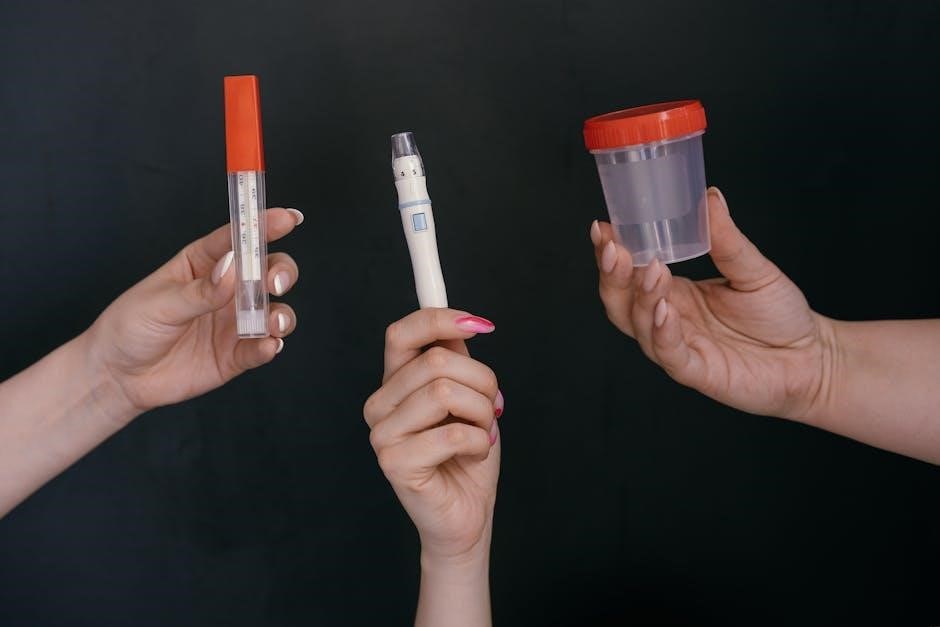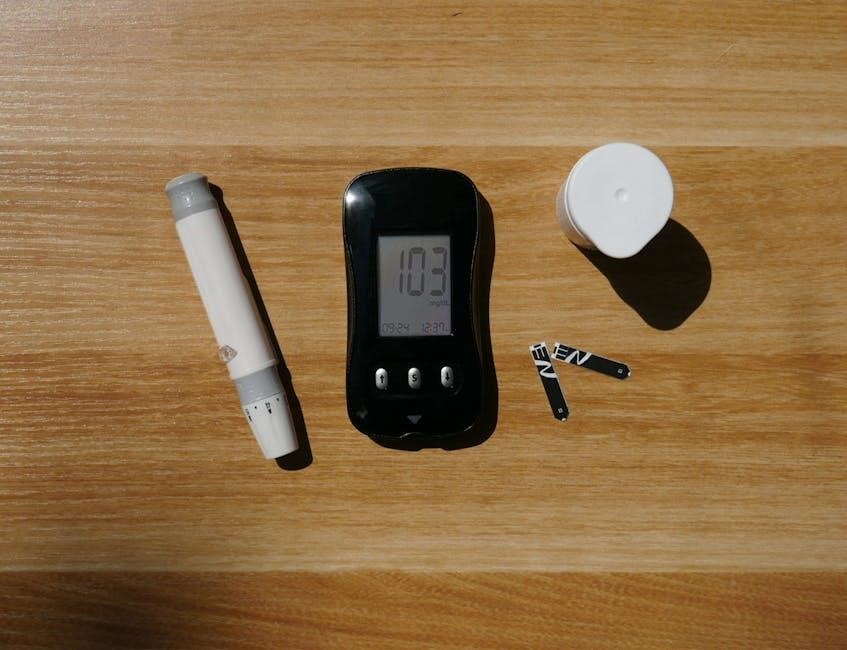The 10 Meter Walk Test (10MWT) is a practical tool to assess walking speed over a short distance‚ widely used in clinical and research settings to evaluate gait and mobility.
Overview of the Test
The 10 Meter Walk Test (10MWT) is a widely used performance measure designed to assess an individual’s gait speed over a short‚ standardized distance. It involves walking 10 meters at a comfortable or fast pace‚ with the time taken recorded to calculate speed in meters per second (m/s). This test is simple‚ cost-effective‚ and requires minimal equipment‚ making it accessible for clinical and research settings. It is particularly useful for evaluating functional mobility in populations with neurological or musculoskeletal conditions‚ such as stroke survivors‚ individuals with Parkinson’s disease‚ or older adults with mobility impairments. The test has demonstrated high reliability and validity‚ making it a valuable tool for tracking progress and outcomes in rehabilitation programs.
Historical Background and Development
The 10 Meter Walk Test (10MWT) has its roots in the 1970s when distance walking tests‚ such as the 25-yard walk‚ were first introduced by Jebsen. However‚ the 10-meter distance gained prominence in 1987 when Wade adapted it for stroke survivors‚ establishing it as a practical tool for assessing gait speed. Over time‚ the test evolved to include both comfortable and fast walking speeds‚ enhancing its utility across diverse patient populations. Its simplicity and effectiveness led to widespread adoption in physical therapy and rehabilitation settings‚ with ongoing research continuing to validate its reliability and applicability for conditions like cerebral palsy and Parkinson’s disease.

Purpose and Significance of the 10MWT
The 10MWT evaluates walking speed‚ functional mobility‚ and gait‚ providing insights into balance and motor recovery. It aids in diagnosing mobility impairments‚ monitoring progress‚ and setting rehabilitation goals effectively.
Assessing Functional Mobility and Gait Speed
The 10MWT is a reliable tool for evaluating functional mobility and gait speed in various populations. It measures the time taken to walk 10 meters‚ providing insights into balance‚ coordination‚ and overall gait patterns. This test is particularly useful for assessing individuals with neurological or mobility impairments‚ such as stroke survivors‚ Parkinson’s patients‚ or those with cerebral palsy. By focusing on a short‚ standardized distance‚ the 10MWT helps clinicians identify gait abnormalities and monitor progress over time. Its simplicity and effectiveness make it a cornerstone in rehabilitation settings‚ enabling tailored interventions to improve walking ability and reduce fall risks in diverse patient groups.
Evaluating Specific Populations (e.g.‚ Stroke‚ Parkinson’s‚ Cerebral Palsy)
The 10MWT is widely applied to evaluate gait in specific populations‚ such as stroke survivors‚ individuals with Parkinson’s disease‚ and those with cerebral palsy. For stroke patients‚ it assesses recovery progress and residual mobility issues. In Parkinson’s cases‚ the test helps measure disease progression and treatment response. For cerebral palsy‚ it evaluates gait abnormalities and intervention effectiveness. The test’s short duration and simplicity make it suitable for these groups‚ providing clear‚ objective data on walking speed and functional mobility. This enables tailored rehabilitation strategies‚ improving outcomes and enhancing quality of life for these populations.
Reliability and Validity of the Test
The 10MWT demonstrates strong reliability and validity across various populations. Studies show high intra-rater and inter-rater reliability‚ indicating consistent results when administered by different testers or repeated over time. Its validity is supported by strong correlations with other gait and mobility assessments. The test accurately measures walking speed‚ making it a reliable tool for tracking changes in mobility over time. Minimal measurement error and excellent test-retest reliability further enhance its clinical utility. These robust psychometric properties make the 10MWT a trusted instrument in both clinical practice and research settings for evaluating functional mobility and gait performance.

Administration of the 10 Meter Walk Test

The test involves walking 10 meters at a comfortable speed‚ timed using a stopwatch. The middle 6 meters is often measured to avoid acceleration/deceleration effects‚ ensuring accurate results.
Preparation and Setup
Preparation for the 10 Meter Walk Test (10MWT) involves ensuring a clear‚ flat‚ and non-slip walkway of at least 10 meters. The test area should be free from obstacles and distractions. A stopwatch or timing device is essential for accurate measurement. Cones or markers may be placed at the start and end points to define the walking path; The participant should wear comfortable footwear and clothing. Instructions are provided to walk at a comfortable‚ self-selected speed. The administrator ensures the participant understands the test before starting. Proper alignment and timing procedures are crucial for reliable results. The setup is simple‚ making it suitable for clinical or field settings.
Test Instructions and Procedures
The 10 Meter Walk Test (10MWT) requires the participant to walk at a comfortable‚ self-selected speed along a 10-meter path. The test begins with the participant standing behind the starting line. Timing starts when the participant’s first foot crosses the start line. The administrator records the time taken to walk the middle 6 meters‚ excluding acceleration and deceleration phases. The test is typically repeated twice or three times‚ with the average speed calculated. Clear verbal instructions are provided to ensure the participant understands the task. The administrator ensures the participant walks without assistance and maintains a consistent pace. This standardized approach minimizes variability and ensures reliable results across different sessions and populations.
Recording and Interpreting Results
Results of the 10MWT are recorded by measuring the time taken to walk the designated 10-meter distance using a stopwatch. Walking speed is calculated in meters per second (m/s) by dividing the distance by the recorded time. The results are interpreted by comparing them to normative values or established thresholds for specific populations‚ such as older adults or individuals with neurological conditions. Faster speeds generally indicate better mobility and functional ability. Clinicians also consider changes in walking speed over time to assess rehabilitation progress or disease progression. Accurate documentation and consistent test administration are crucial for reliable and meaningful interpretations of the results.
Interpretation of Results
Walking speed is calculated in meters per second‚ providing insights into functional mobility and gait efficiency. Results are compared to normative values and thresholds to assess impairment severity and track progress over time.
Calculating Walking Speed in Meters per Second
Walking speed is calculated by dividing the distance (10 meters) by the time taken to complete the test. The formula is: speed = distance (m) / time (s). This measurement provides a standardized metric to assess gait efficiency and functional mobility. The result is expressed in meters per second (m/s)‚ offering a clear and objective quantification of walking ability. Clinicians use this data to monitor progress‚ evaluate treatment effectiveness‚ and compare results against normative values. Accurate calculation ensures reliable outcomes for clinical decision-making and rehabilitation planning.
Normative Values and Thresholds
Normative values for the 10MWT vary across populations but generally indicate average walking speeds for healthy individuals. For adults‚ typical walking speeds range from 1.2 to 1.5 meters per second (m/s). Thresholds are used to identify abnormal gait speeds‚ with values below 1.0 m/s often indicating mobility impairments. Specific populations‚ such as older adults or those with chronic conditions‚ may have lower normative values. For example‚ older adults typically walk between 1.0 and 1.3 m/s‚ while individuals with neurological conditions may have speeds below 0.8 m/s. These thresholds help clinicians interpret results‚ set rehabilitation goals‚ and monitor progress over time.
Minimal Clinically Important Difference (MCID)
The Minimal Clinically Important Difference (MCID) for the 10MWT represents the smallest change in walking speed that is meaningful for patients. Studies suggest an MCID of approximately 0.1 to 0.2 meters per second (m/s)‚ indicating a noticeable improvement or decline in mobility. This threshold helps clinicians determine whether changes in walking speed are clinically significant‚ beyond measurement error. For example‚ a patient improving from 0.8 m/s to 1.0 m/s would exceed the MCID‚ reflecting a meaningful recovery. This measure is crucial for setting realistic goals in rehabilitation programs and assessing the effectiveness of interventions over time.

Practical Applications and Tips
The 10MWT is widely used in clinical settings to assess mobility. Ensure accurate results by using a stopwatch and a clear‚ straight path for walking.
Clinical Use and Integration into Rehabilitation Programs
The 10MWT is a valuable tool in clinical settings for assessing and monitoring functional mobility in patients with neurological or musculoskeletal conditions. It is often used to evaluate gait speed and walking ability in individuals with stroke‚ Parkinson’s disease‚ cerebral palsy‚ and older adults with mobility impairments. The test’s simplicity and reliability make it an essential component of rehabilitation programs‚ allowing healthcare providers to track progress over time. By integrating the 10MWT into treatment plans‚ therapists can set realistic recovery goals and tailor interventions to improve walking speed and overall functional independence. Regular administration of the test helps in documenting improvements and adjusting therapies accordingly‚ ensuring personalized and effective care.
Tips for Accurate Test Administration
Ensure the test area is clear and flat to minimize distractions and safety risks. Use a stopwatch or electronic timing device for precise measurements. Instruct the patient to walk at their comfortable speed‚ avoiding rushing or slowing down unnecessarily. Measure the time for the middle 6 meters to exclude acceleration and deceleration phases. Administer the test in a quiet environment to maintain focus. Use standardized instructions to ensure consistency across trials. Conduct at least two to three trials to account for variability and ensure reliable results. Record both time and walking speed in meters per second for accurate documentation and comparison. Use assistive devices only if necessary and consistent across trials for valid outcomes.